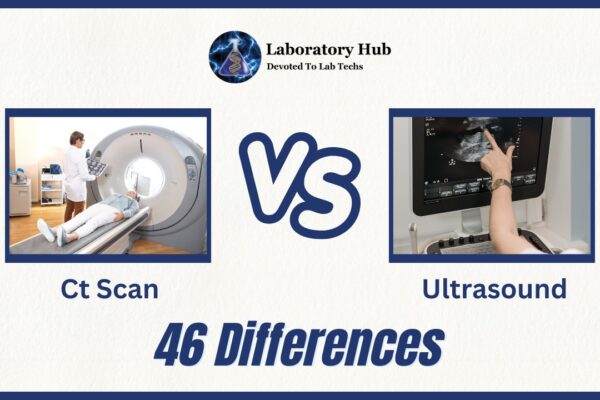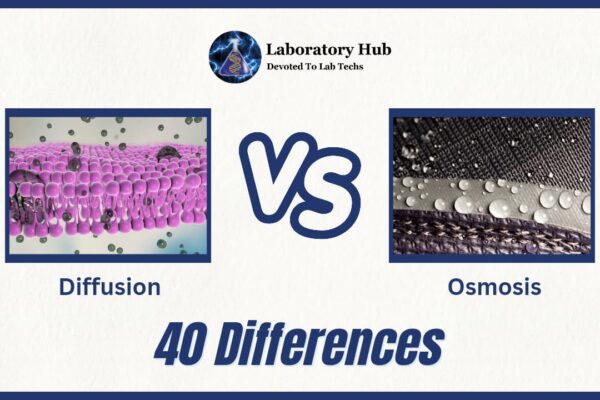MHC Class I vs Class II- 20 Differences
Introduction
The MHC recognizes and presents foreign antigens to immune cells in the complicated human immune system. Adaptive immunity relies on the MHC, also known as the Human Leukocyte Antigen (HLA) system, which links cells to the immune response. MHC molecules are divided into MHC Class I and Class II. Understanding immune recognition and response requires understanding these classes’ different functions.
MHC Class I molecules cover most nucleated cells. Their main job is to convey endogenous intracellular antigens like viral or tumor proteins to cytotoxic T lymphocytes (CTLs). The immune system can recognize and kill contaminated or aberrant cells, avoiding infections and cancers. Beta-2 microglobulin is non-covalently bound to a transmembrane heavy chain in MHC Class I molecules. They establish a peptide-binding groove for 8-10-amino-acid antigenic peptides.
Professional APCs like macrophages, dendritic cells, and B cells express MHC Class II molecules. These molecules deliver extracellular antigens from bacteria or toxins to helper T lymphocytes (Th cells). The cells activate other immune cells and produce antibodies to orchestrate immunological responses. Alpha and beta transmembrane chains of MHC Class II molecules form the peptide-binding cleft.
Peptide-binding preferences and immune cell types distinguish MHC Class I and Class II molecules. MHC Class I molecules bind endogenous peptides, while Class II molecules present exogenous ones. MHC Class I molecules connect with CTLs, encouraging cell-mediated immune responses, whereas MHC Class II molecules engage Th cells, increasing humoral immune responses.
Immune recognition and response depend on MHC Class I and Class II interactions. These molecules help the immune system find and kill intracellular infections and malignant cells by presenting a varied repertoire of antigens to various T lymphocyte subsets. The MHC system may help us comprehend immune-related illnesses and create new immune-system-based therapies.
Also read: O antigen vs H antigen – 25 Differences
S.No. | Category | MHC Class I Molecules | MHC Class II Molecules |
1 | Location | Found on the surface of all nucleated cells. | Found on the surface of antigen-presenting cells (APCs) such as macrophages, dendritic cells, and B cells. |
2 | Structure | Composed of a single polypeptide chain (α chain) and a non-covalently associated β2-microglobulin chain. | Composed of two polypeptide chains (α and β chains) that form a heterodimer. |
3 | Antigen Binding Groove | Binding groove accommodates shorter peptide antigens (typically 8-10 amino acids in length). | Binding groove accommodates longer peptide antigens (typically 13-25 amino acids in length). |
4 | Peptide Source | Presents peptides derived from cytosolic proteins, including viral and tumor antigens. | Presents peptides derived from extracellular pathogens, such as bacteria and parasites. |
5 | Antigen Presentation | Presents antigens to cytotoxic CD8+ T cells (cytotoxic T lymphocytes, or CTLs). | Presents antigens to helper CD4+ T cells (T helper cells). |
6 | Cellular Immunity | Plays a role in cell-mediated immune responses against intracellular pathogens and tumor cells. | Plays a role in coordinating immune responses, including activation of B cells and CD8+ T cells. |
7 | Expression Regulation | Expression is constitutive on most nucleated cells and upregulated by interferons during viral infections. | Expression is regulated and induced primarily on antigen-presenting cells upon activation. |
8 | Peptide Loading | Peptides are loaded onto MHC Class I molecules in the endoplasmic reticulum (ER). | Peptides are loaded onto MHC Class II molecules in the endosomal compartments. |
9 | Endocytic Pathway | MHC Class I molecules do not utilize the endocytic pathway for antigen presentation. | MHC Class II molecules utilize the endocytic pathway for antigen presentation. |
10 | Associated Proteins | Associated with β2-microglobulin and the transporter associated with antigen processing (TAP). | Associated with the invariant chain (Ii) and the human leukocyte antigen-DM (HLA-DM). |
11 | T Cell Recognition | Interacts with the T cell receptor (TCR) on CD8+ T cells. | Interacts with the T cell receptor (TCR) on CD4+ T cells. |
12 | Co-receptors | Interacts with CD8 co-receptor on cytotoxic T cells. | Interacts with CD4 co-receptor on helper T cells. |
13 | Epitope Processing | Endogenous antigens are processed in the cytosol via proteasomal degradation. | Exogenous antigens are processed in endosomes via lysosomal degradation. |
14 | MHC Polymorphism | MHC Class I molecules exhibit high polymorphism, with many different alleles in the population. | MHC Class II molecules also exhibit polymorphism, but generally less diverse than Class I. |
15 | Peptide Binding Specificity | MHC Class I molecules have a preference for peptides with hydrophobic or basic residues at specific positions. | MHC Class II molecules have a preference for peptides with hydrophobic or acidic residues at specific positions. |
16 | Association with Disease | MHC Class I molecules are associated with autoimmune diseases and transplant rejection. | MHC Class II molecules are associated with autoimmune diseases, allergies, and susceptibility to infections. |
17 | Activation of Immune Response | MHC Class I-mediated presentation leads to the activation of cytotoxic immune responses. | MHC Class II-mediated presentation leads to the activation of helper immune responses. |
18 | Interaction with NK Cells | MHC Class I molecules interact with inhibitory receptors on natural killer (NK) cells. | MHC Class II molecules do not directly interact with NK cells. |
19 | Tissue Expression | MHC Class I molecules are expressed in most tissues. | MHC Class II molecules are primarily expressed on professional antigen-presenting cells. |
20 | Clinical Applications | MHC Class I typing is important for organ transplantation and disease associations. | MHC Class II typing is important for disease associations and understanding immune responses. |
Frequently Asked Questions (FAQS):
CTLs receive intracellular antigens from viral or tumor proteins from MHC Class I molecules. This presentation helps CTLs identify and kill diseased or aberrant cells. MHC Class II molecules, however, deliver foreign antigens from bacteria or toxins to helper T lymphocytes (Th cells). The cells stimulate immune cell activation and antibody synthesis.
Virus and tumor proteins attach to MHC Class I molecules. These peptides have 8–10 amino acids. MHC Class II molecules prefer exogenous peptides from bacteria. MHC Class I molecules have a heavy chain and beta-2 microglobulin in their peptide-binding cleft, while Class II molecules have alpha and beta chains.
MHC Class I molecules cover most nucleated cells. MHC Class I molecules display intracellular antigens and activate immune responses in infected or dysfunctional cells due to their extensive distribution. Professional APCs like macrophages, dendritic cells, and B cells express MHC Class II molecules. The cells get antigens from these APCs.
MHC Class I and Class II changes can affect immune-related illnesses. MHC Class I deficits may reduce the identification and clearance of infected or malignant cells, causing prolonged viral infections or tumor growth. MHC Class II anomalies can affect the immune response to bacterial or fungal infections and cause autoimmune disorders.
Understanding MHC Class I and Class II molecules helps explain immune detection and response. This knowledge can help produce vaccines, immunotherapies, and tailored treatments. Cancer immunotherapies try to improve MHC Class I tumor antigen presentation to target cancer cells. MHC molecules also identify genetic susceptibility factors for numerous illnesses, improving diagnostic and treatment methods.







